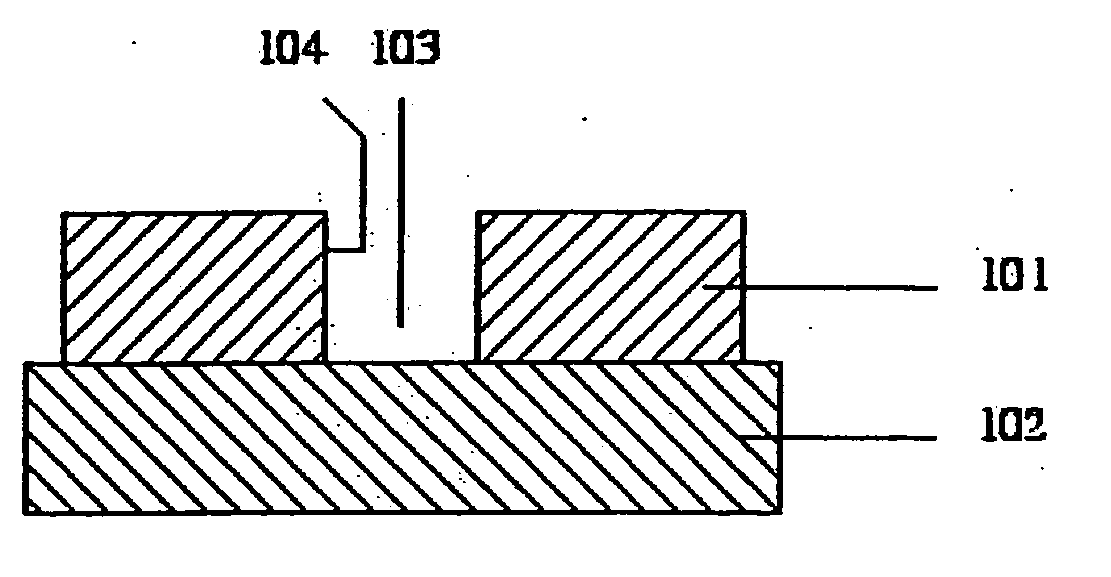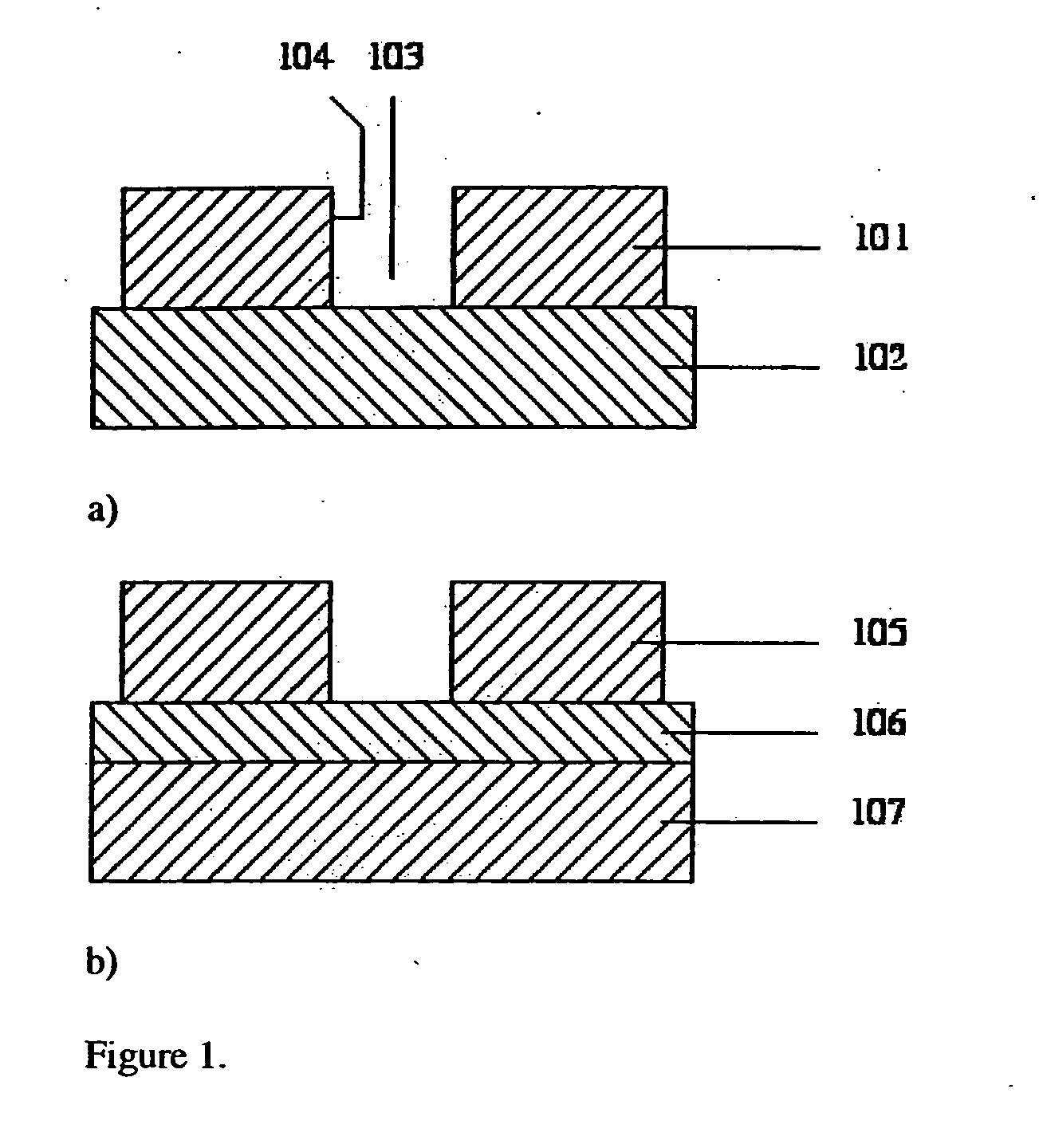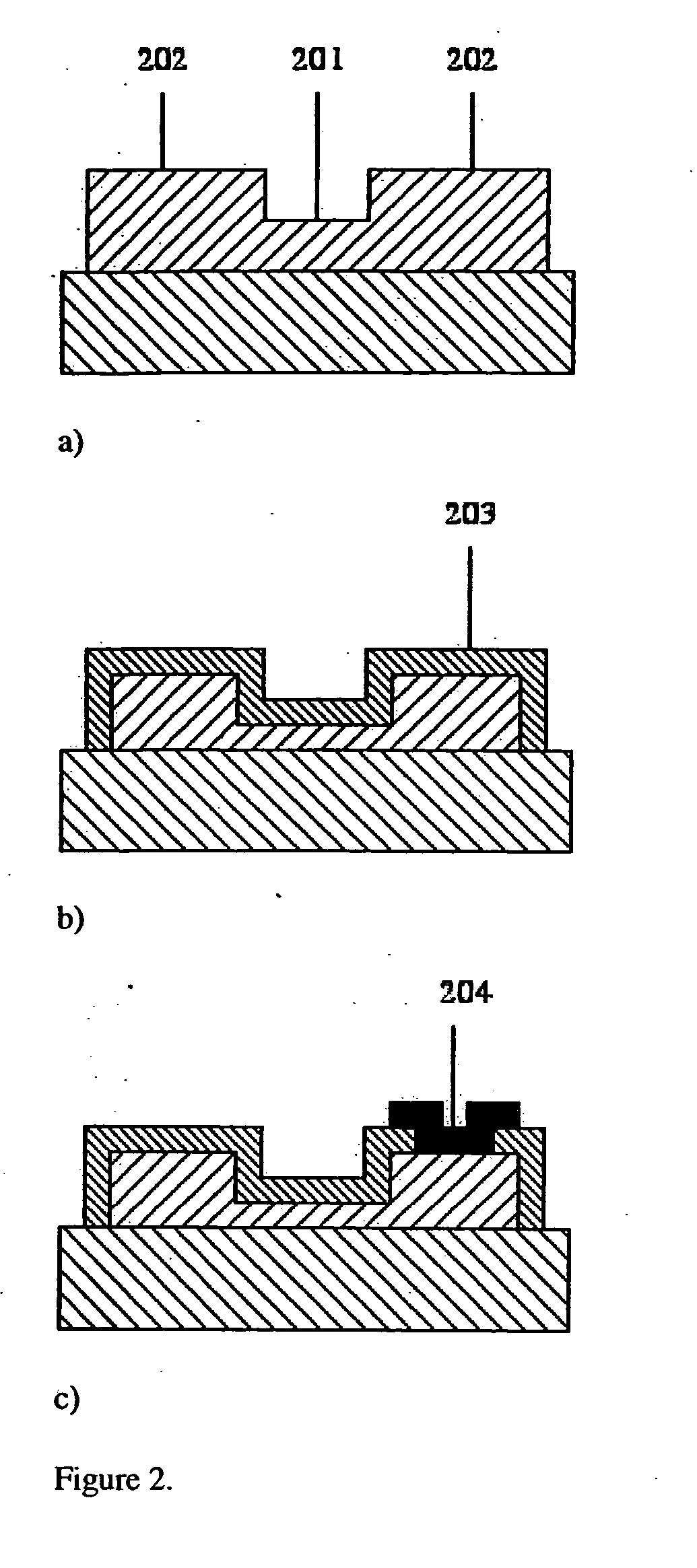Micro-engineered electron multipliers
a micro-engineered, electron-producing technology, applied in the direction of multiplier electrode arrangements, multiplier tubes, instruments, etc., can solve the problems of limited range of possible features, high cost of processing, and restricted choice of coatings for secondary electron emission, so as to enhance secondary electron emission
- Summary
- Abstract
- Description
- Claims
- Application Information
AI Technical Summary
Benefits of technology
Problems solved by technology
Method used
Image
Examples
Embodiment Construction
[0054] A detailed description of the invention is now provided, with reference to FIGS. 1-5.
[0055]FIG. 1a shows a cross-section of a silicon-on-glass wafer, which consists of a first material provided by a silicon layer 101 bonded to a second material provided by a glass or silica layer 102. The first material is a semiconductor, which may be converted into an insulator with enhanced secondary emission properties by oxidation and subsequent annealing at high temperature in hydrogen gas. It will be appreciated that in this context, the hydrogen is acting as a reducing agent and that other reducing agents could equivalently be used for specific applications. The second layer provides an insulating substrate. Using a single layer of patterning, the silicon layer 101 may be structured by deep reactive ion etching (DRIE) to form vertical features 103, stopping at the interface between the two materials. It will be appreciated that each vertical feature forms a structure with sidewalls 1...
PUM
 Login to View More
Login to View More Abstract
Description
Claims
Application Information
 Login to View More
Login to View More - R&D
- Intellectual Property
- Life Sciences
- Materials
- Tech Scout
- Unparalleled Data Quality
- Higher Quality Content
- 60% Fewer Hallucinations
Browse by: Latest US Patents, China's latest patents, Technical Efficacy Thesaurus, Application Domain, Technology Topic, Popular Technical Reports.
© 2025 PatSnap. All rights reserved.Legal|Privacy policy|Modern Slavery Act Transparency Statement|Sitemap|About US| Contact US: help@patsnap.com



